History and the 21st Century Mingle During Our Euphrates River Journey
By: Habeeb Salloum/Arab America Contributing Writer
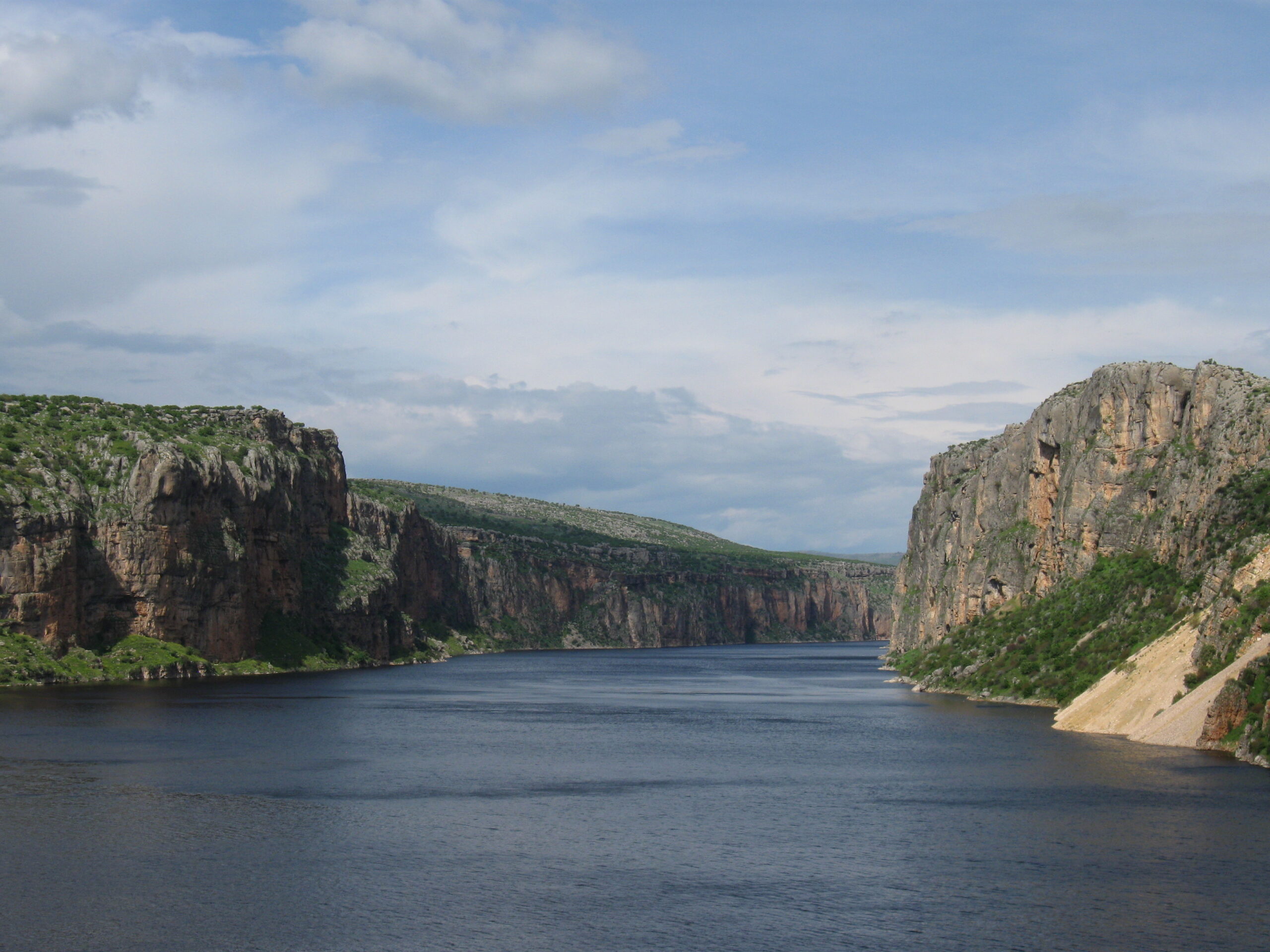
We had left behind the majestic ruins of Palmyra, known as Tudmur and had now turned on a pot-holed desert road on our way to Qasr al-Hira al-Sharqi, constructed as a summer residence for the Umayyad caliphs. Having a historic love for the Umayyad Dynasty, I thought that it would be appropriate to make their desert memento the first stop on our Euphrates River journey.
After bumping around in our car for about a half hour we reached this much used desert palace between 690-743 A.D, Lying, via a desert tract, some 30 km (19 mi) off the main Palmyra to Deir-ez-Zor highway and 105 km (65 mi) to the northeast of Palmyra., it is rarely visited by tourists. We stopped by the Qasr to gaze in wonder at one of the many Syrian architectural wonders, which still preserve their original identities.
At first sight, with the bright orange walls of the ruins rising out of a desert plain, the setting looked spectacular. However, after we began to explore the ruins, a palace located next to a small walled town, it was soon apparent that they had very little to offer. However, some renovated parts and the walls of both the castle and small town, amazingly intact, looked impressive.
After near a two- hour drive we reached Deir-ez-Zor, Syria’s northern agricultural capital – proudly called by its inhabitants ‘Bride of the Desert. The next morning after a restful sleep in the luxury Fourat Cham Palace Hotel with its 21st century amenities we visited the spectacular Deir ez-Zor Museum then left on our way westward along the mighty Euphrates.
Along both sides of this historic river, greenery, dominated by corn and cotton fields, stretched in many places as far as the eye could see. It was a narrow strip of emerald embraced by the barren desert. Ibrahim, our driver was upbeat, “Syria is a country that continues to develop fast developing.” Motioning with his hand, he continued, “Look! All these crops were not here a few years ago.” Forty years previously I had travelled the same route and the edging towns had appeared to be the poorest on earth. The sands in most places touched the water and the village homes, built of mud-brick, were indistinguishable from the surrounding soil. Now, newly built cement houses appeared pleasant to the eye, but are said to be much less accommodating to the blazing summers and cold winters.
On the other hand, the ancient homes, enduring for thousands of years, were well adapted to the extremes in climate – remaining at a constant temperature summer and winter. At times, the evolvement of humankind has become ascetically pleasant, but functionally regressive.
About 50 km (30 mi) west of Deir ez-Zor we turned off the road to examine the ruins of the Halabiyah Fortress. Built by the Palmyrans, it was major bastion during the reign of Queen Zenobia and later an important defence post for the Romans and Byzantines, guarding against Persian invasions. It is said that the Romans captured Zenobia in this fortress while she was trying to escape to Persia. After the Arab conquest, Halabiyah lost its strategic importance and was abandoned.
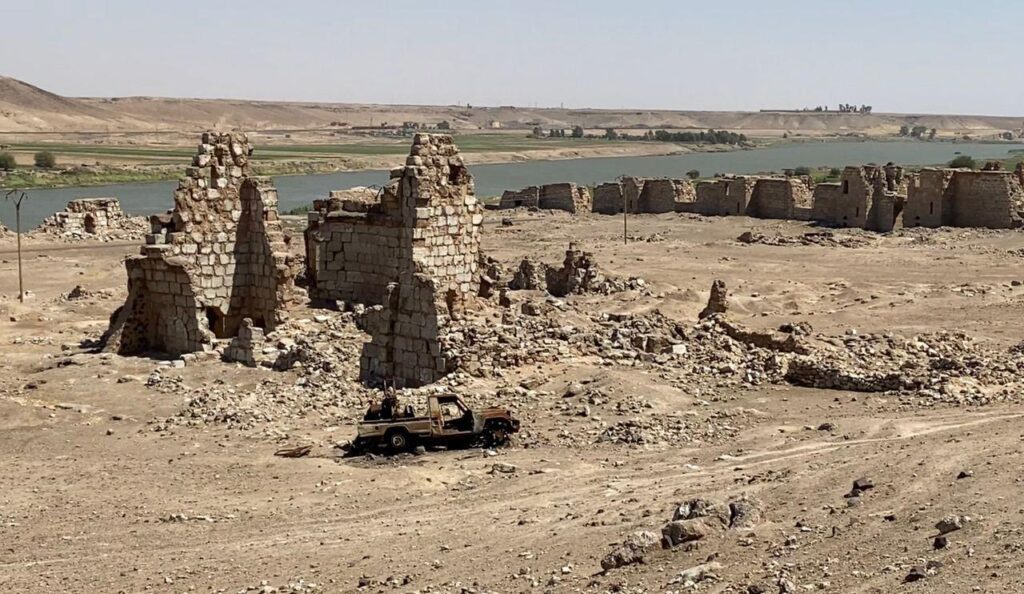
From a high point in the ruins, we had a splendid view of the remains of this Palmyran citadel, the river, the steppes beyond and, across the Euphrates, Zalabiyah – another of Zenobia’s ruined bastions. From our vantage point, it appeared to be a crumpled pile of ruins. “It’s sad to think that here Zenobia had her last days of freedom”, Ibrahim commented as we left Halabiyah behind.
The green fields again kept us company as we made our way westward. Occasionally, we would pass women in brightly coloured traditional dresses picking the white cotton, creating colourful countryside scenes. From the distance it appeared that the women were large blooming flowers in lush fields of green.
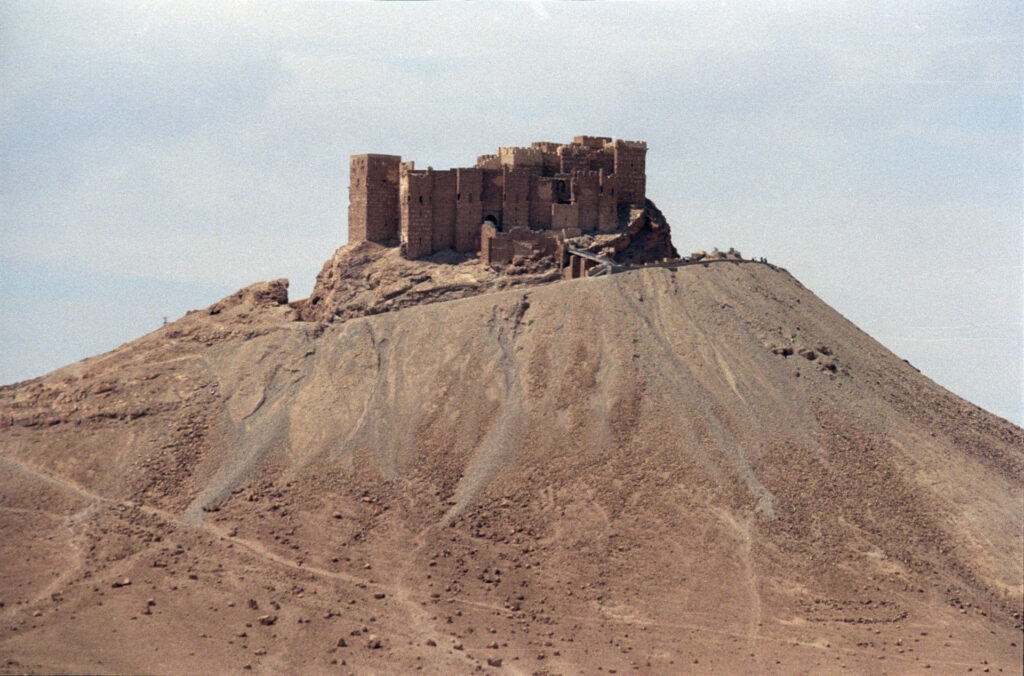
Raqqa (meaning flat), an agricultural and commercial centre about half way between Deir ez-Zor and Aleppo was our second stop for the day. Founded by Alexander the Great in the 4th century B.C., it we rebuilt by the Abbasid Caliph, Al-Mansur. In the ensuing centuries it became an important city and, for a time, was the capital of the Arab/Islamic Empire.
In 1258, it was destroyed by the Mongol armies of Hulagu and, thereafter went into 700 years of deep sleep. However, during the last few decades, the nearby Assad Dam with its irrigation projects has roused Raqqa from its long years of slumber establishing itself as a link between a rich past and a promising future.
We drove through the bustling heart of this overgrown farming town with fine parks, impressive modern structures and well-kept ruins. From these relics of the past, we examined the minaret of the once Great Mosque; the Baghdad Gate in the partially preserved walls; and Qasr al-Banat (Palace of the Maidens), a section of an Abbassid palace built by the Caliph Al-Mu’tasim.
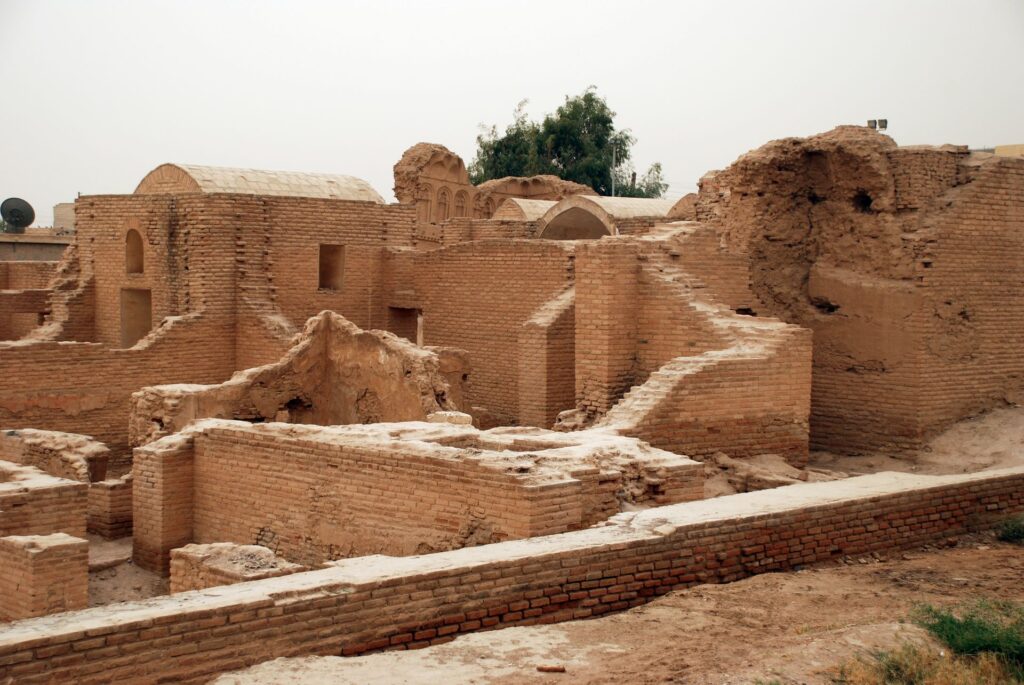
Noting that I was taking a photo of this relic, a passing young man asked, “Why are you interested in this heap of mud?” It was hot and I was not in the mood to reply. No doubt he thought that I was one of these mad Westerners.
Passing the relatively new Tabqa Dam, we came to the town, Madinat al-Thawra, where the world’s largest earth-filled dam has been built on the Euphrates. Called Lake Assad, the 640 sq km (250 sq mi) artificial lake supplies most of Syria’s electrical power. The town, the dam and the hydroelectric pylons marching off into the horizon, were all constructed with Russian help. This is reflected in the buildings that are sombre and have little Middle Eastern flavour.
Making our way over the top of the dam, we drove for about 10 minutes to the citadel of Jabar – a unique pink fortress. Picturesque with its richly decorated towers and minaret, it stands proudly, surrounded on three sides by the waters of the Dam. Built by Nur ad-Din in the 12th century, it served as a guard post for the caravans in the Euphrates Basin. Today, it has been partially restored and turned into a museum fortress – luring the historic traveller.
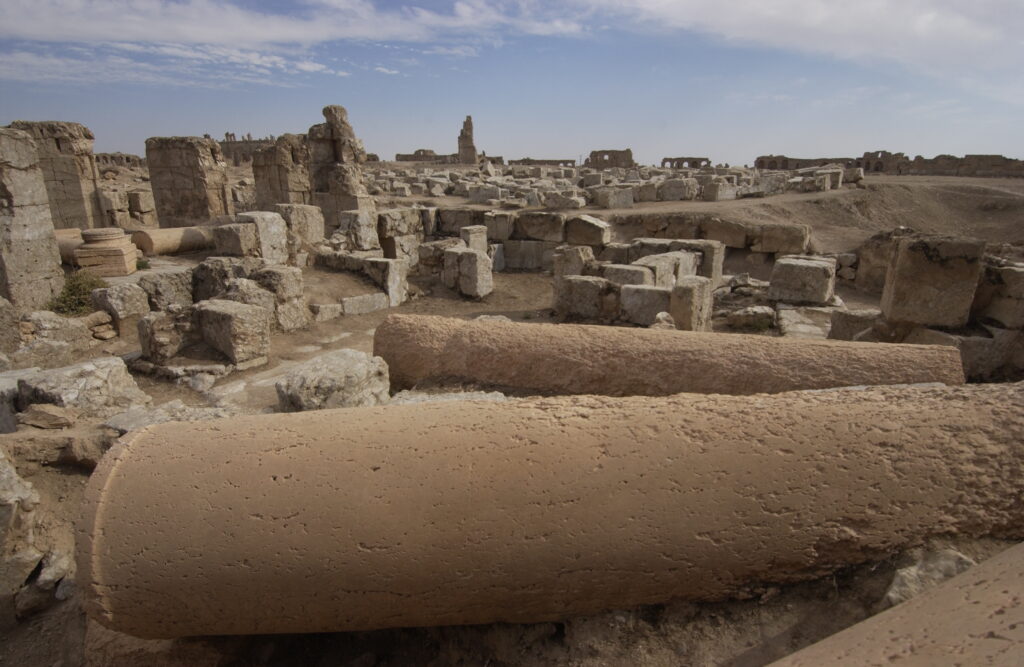
From the Dam we made our way back to the Rusafa, 30 km (19 mi) south of Raqqa. Once a stopover oasis on the caravan route from Palmyra to the Euphrates, it was important in Roman and Byzantine times. The Ghassanid Arabs, allies of Rome, once made it their capital and after the Muslim conquest the Umayyad Caliph Hisham Abd al-Malik restored it as a desert retreat. However, after the Mongol devastation of the Middle East, it faded from history.
As we approached, its well-preserved walls rose out of the desert, seemingly out of nowhere. One of the most extraordinary and best preserved of Syria’s ruined desert cities, its structures built from quartz, once praised by Arab bards, still exude some of their former glory.
In this former Umayyad playground we ended our Euphrates River exploration. It was a fulfilling historic yet modern journey where one travelled through an old but evolving land – a gripping two-day trip where the relics from the old continue to enhance the new.



